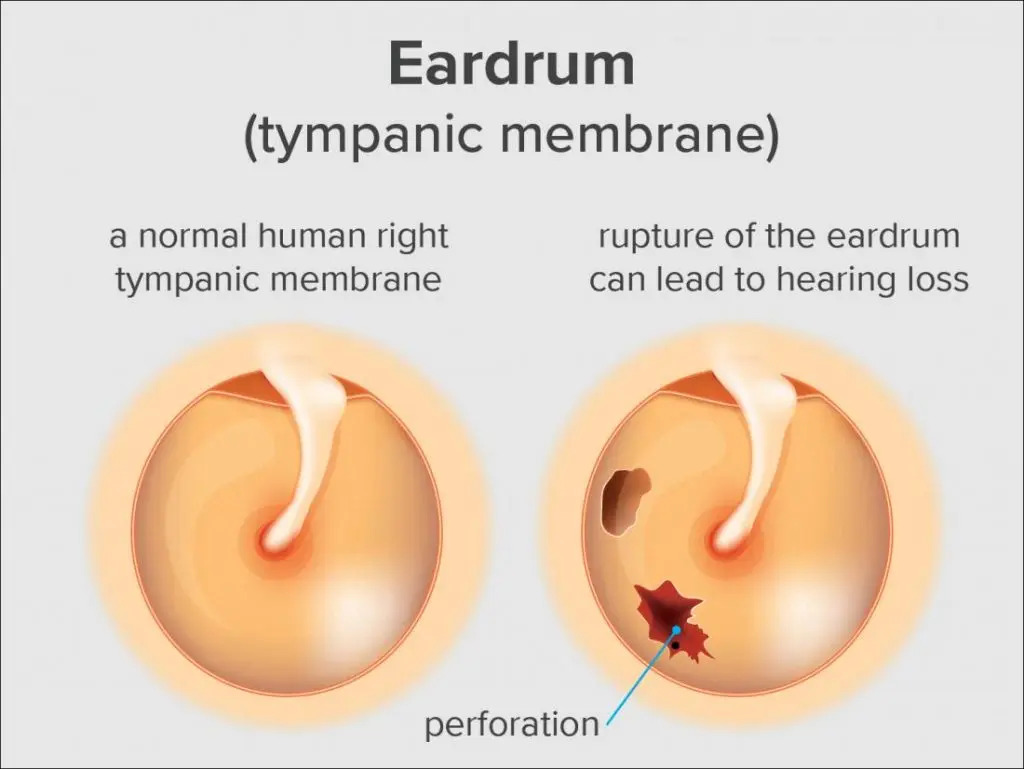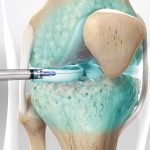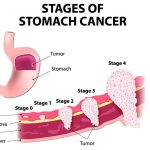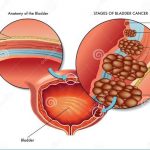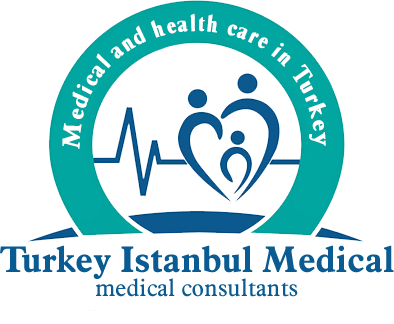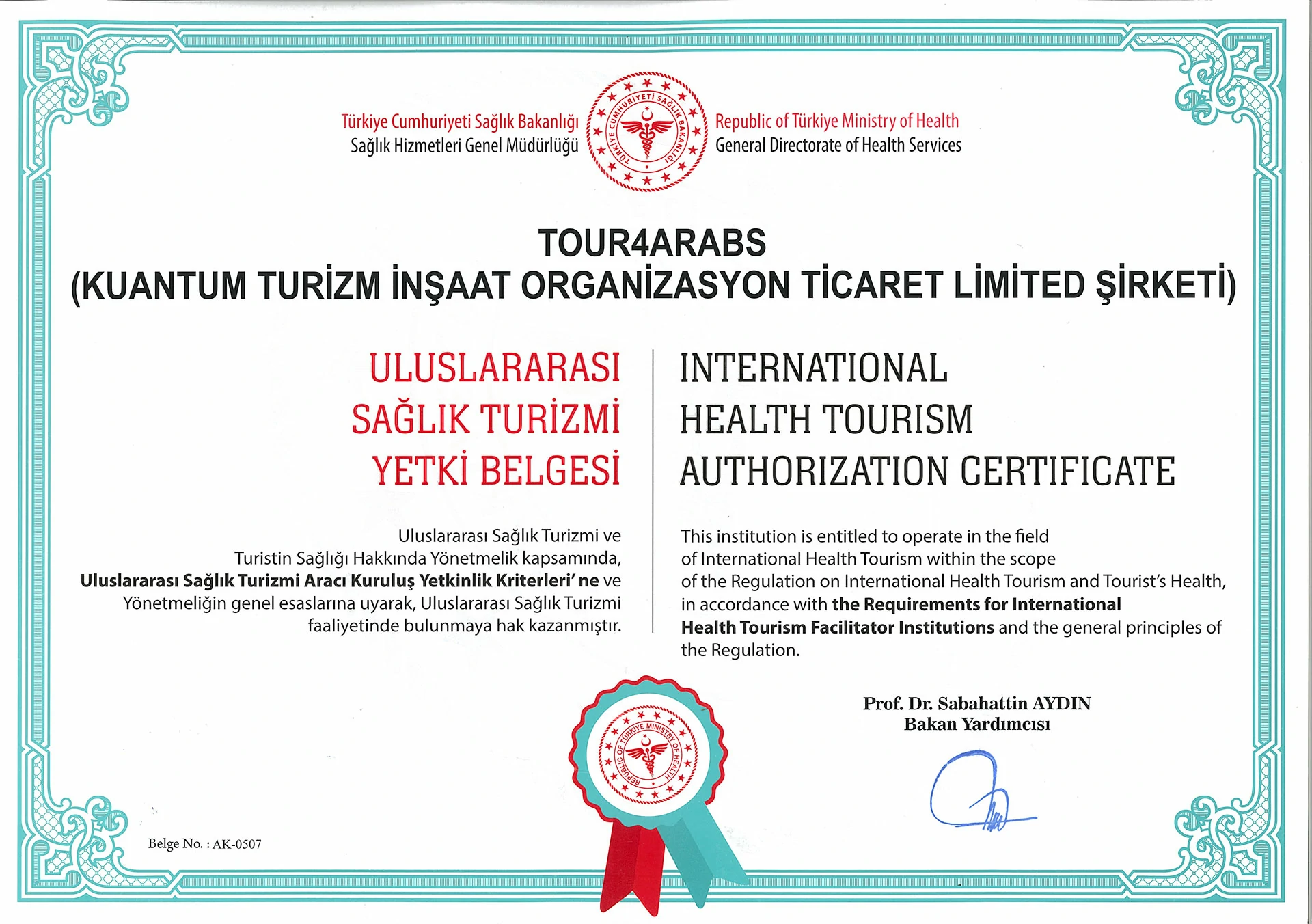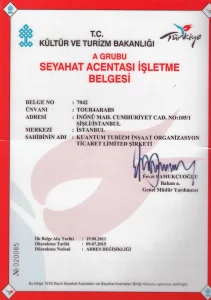What is The Eardrum?
The Tympanic Membrane is a vital component of the human ear and is more commonly known as the eardrum. It is a thin, circular layer of tissue that marks the point between the middle ear and the outer ear. It has a thickness of about 0.1 mm, a diameter of 8 to 10 mm, and a mass weight of 14 mg. Despite this small size and mass, the eardrum is extremely rigid and flexible.
The function of the eardrum is to assist human hearing. When sound waves enter the ear, they hit the eardrum. The membrane (eardrum) vibrates with the force of the sound wave and transmits the vibrations further inwards, to the bones of the middle ear.
Patients with ruptured or absent eardrums have extreme difficulty in hearing and experience complete hearing loss over time.
Eardrum Tear
A Ruptured Eardrum occurs as a result of a tear in the thin membrane that separates your outer ear from your inner ear. When the membrane ruptures, this condition causes severe pain in the ear in some people, while in others it goes away on its own (without treatment) within a few months with no symptoms.
The eardrum senses and vibrates when sound waves enter the ear. It then converts these sounds into nerve impulses that transmit to the brain. It also protects the middle ear from water, bacteria and foreign bodies. If damaged, bacteria can enter the middle ear and cause a middle ear infection or damage your hearing.
What are the Causes ?
Infection
One of the most common causes of ruptured eardrum is an ear infection. When the middle ear becomes infected, fluids build up behind the eardrum and put pressure on the eardrum. When the pressure increases, the eardrum may rupture.
Pressure Changes
The eardrum sometimes ruptures as a result of what is known as barotrauma. Barotrauma occurs when the pressure outside the ear is drastically different from the pressure inside the ear, meaning the two pressures are unequal. The following causes can cause barotrauma:
- Traveling by plane
- Shock waves
- Scubadiving
Severe Impact
You can also tear your eardrum due to a severe blow to your ear. Any blow to the ear or the side of your head can cause a tear.
- Taking a severe blow to the ear
- Having a car accident
- To deeply clean the inside of the ear with a foreign object such as a cotton-tipped swab or wire used to remove earwax.
Symptoms of Eardrum Tear
Although pain is the main symptom of ruptured eardrums, some people do not notice any pain or symptoms when their eardrum is ruptured.
Those who feel the pain see that the affected ear begins to flow after the pain has passed. At this point, the eardrum ruptures. If the rupture is caused by a middle ear infection, it usually causes bleeding.
Other Symptoms of Rupture of the Eardrum are as follows:
- Sudden onset of ear pain or sudden reduction in ear pain
- A bloody or pus-like fluid coming from the ear
- Buzzing in the ear
- Partial hearing loss in the problem ear
- Ear infections
- Dizziness
Diagnosis
Most of the patients do not care about the symptoms caused by the perforation of the eardrum. Even if the discharge in the ear continues for years, some patients do not take this into account. Conducting such behaviors paves the way for further progression of the disease and the emergence of larger health problems.
Perforation of the eardrum due to impacts may heal spontaneously if it does not cause an infection. However, if the treatment is desired to progress quickly, people with symptoms should definitely see a specialist doctor. Because these conditions can only be diagnosed by doctors. As specialist doctors, otolaryngologists should be preferred. Otolaryngologists listen to patients’ complaints and apply some hands-on hearing tests. As a result of these tests, diagnoses are made about the condition of the ear.
Treatment Methods
Treatments for ruptured eardrums serve to relieve pain and eliminate infection. The vast majority of ruptured eardrums heal within three months.
But if the healing of the eardrum is slow, the following methods can be applied:
-
Patch
If your ear takes a long time to heal, your doctor may cover the eardrum with a patch. Patching the eardrum is done by placing a medicated paper patch over the tear in the eardrum.
-
Antibiotics
To prevent an ear infection or treat an existing infection, your doctor may prescribe antibiotics. If the ruptured eardrum is causing pain, the doctor may recommend using an over-the-counter pain reliever.
-
Operation
In some cases, surgery may be required to close the hole in the eardrum. The surgery is usually done as an outpatient procedure and takes several hours. During surgery, your doctor takes tissue from another part of your body and attaches it to the eardrum.
While your eardrum is healing, you must take care to keep your ear dry. Until your doctor says your eardrum is healed, you should not swim, use a shower cap or water-repellent earplugs while showering.
Other measures include:
- Not using any medication other than those prescribed by your doctor
- Taking all the medicines your doctor gave you
- Protecting your ear from cold air
- Avoiding blowing your nose and blowing your nose while the ear is healing
Eardrum Tears in Children
Ear infections are the most common cause of eardrum ruptures in children. Since 5 out of 6 children will have had at least one ear infection by the age of 3, it is a good idea to take your child to the doctor immediately if you notice any of the following symptoms:
- Mild or severe ear pain
- Bloody or pus-filled discharge leaking from the ear
- Vomiting, constant dizziness or nausea
- Tinnitus
Because children’s eardrums are more sensitive than adults, the damage can have long-term effects on hearing if left untreated.
How is The Surgery Done?
Eardrum surgery is performed under local or general anesthesia. It can be applied with different techniques. The surgery can be performed behind the ear or through the ear. However, in order for it to be done through the ear, the hole must be small or the ear canal must be of appropriate width.
The tissue (patch) placed to close the hole can be ear cartilage, the membrane surrounding the cartilage, both, or the membrane of the chewing muscle behind the ear.
It takes about 2-3 weeks for the patch to fuse and integrate with the eardrum. Eardrum surgery is an operation that usually results in success. However, if the hole does not close, it may need to be repeated.
Hearing recovery takes an average of 2-3 months. At least 6 weeks should be waited to comment on the hearing.
Post-Eardrum Surgery Period
The period following the eardrum surgery is as follows;
- The ear wrap is removed after 24 hours.
- The tampon in the external ear canal is removed in approximately 1-3 weeks.
- Although there may be mild pain, it can be relieved with simple painkillers.
- There may be a slight discharge that gradually decreases.
- In case of an incision behind the ear, mild numbness may occur in the area. This is normal and will correct itself.
- The substances put in to fix the patch dissolve on their own, they do not need to be removed.
Post-Surgery Patient Considerations
There are some points that the patient should pay attention to after eardrum surgery.
These;
- In the first week following the operation, one should lie with the head up (2-3 pillows can be used).
- It should be fed with soft, fibrous and juicy foods.
- Coughing and straining should be avoided.
- Heavy physical activity and sports should be avoided for at least 1 month and water sports should be avoided for at least 6 months.
- Heavy lifting should not be done for 15 days after the operation.
- Water should not be spilled in the ear for at least 2 months after the operation. For this, the ear can be protected with the help of vaseline cotton or tampon.
